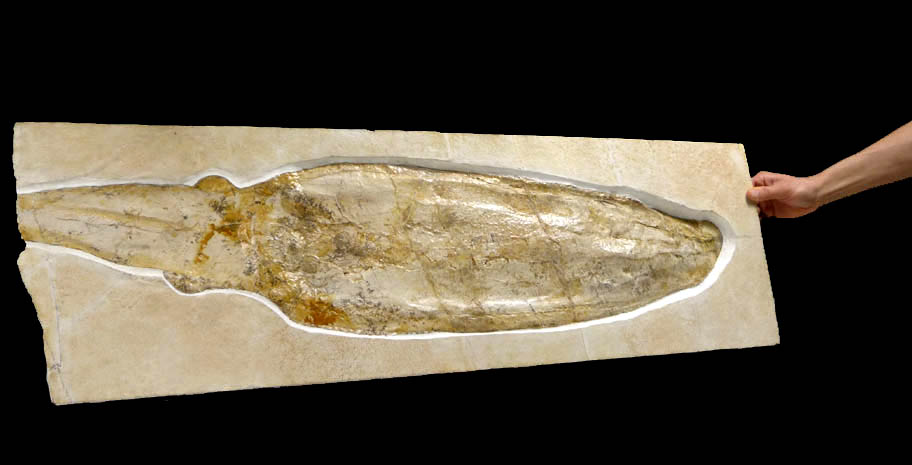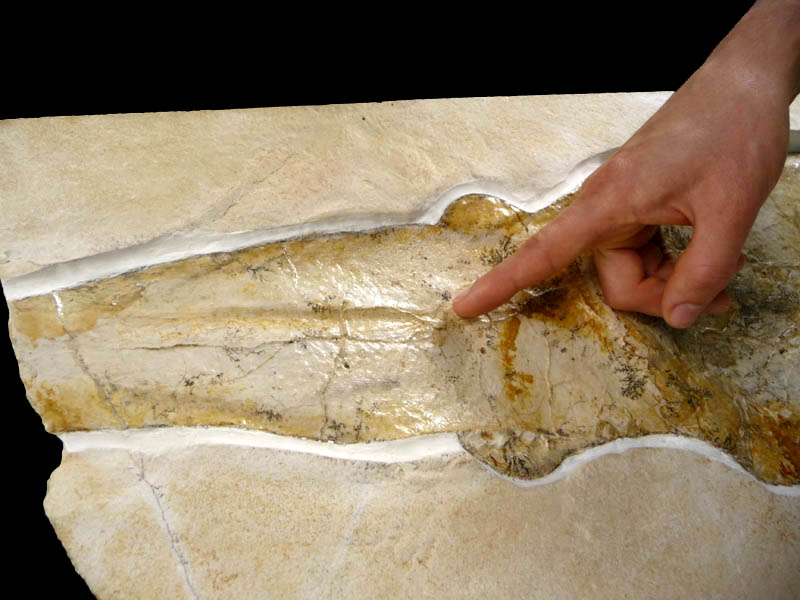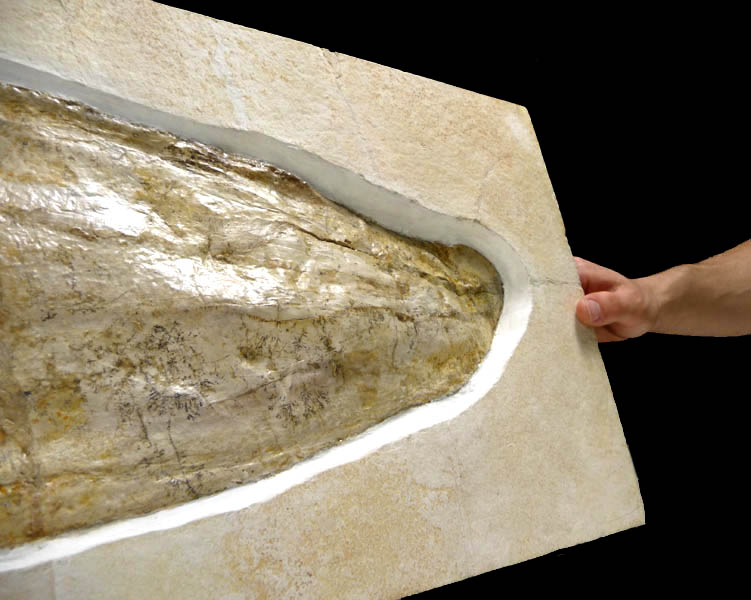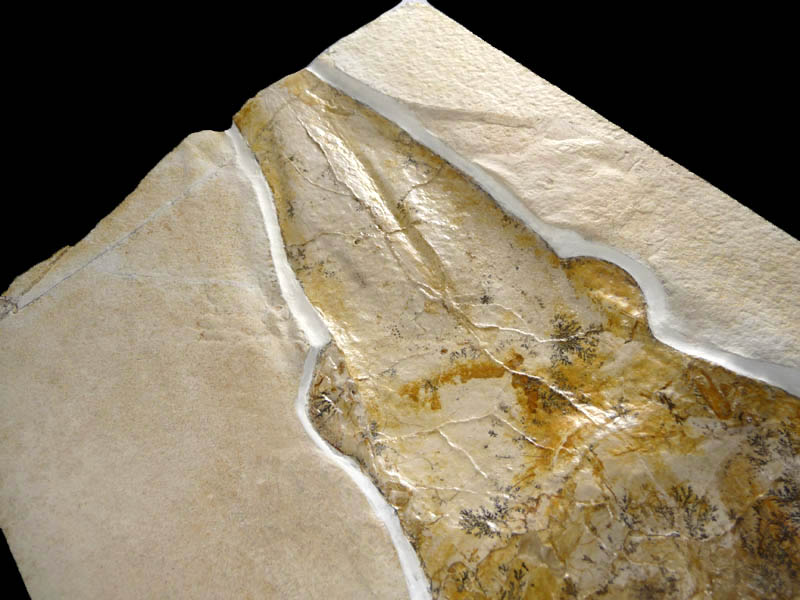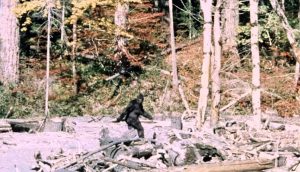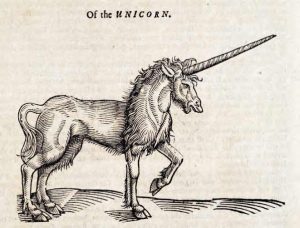Rare Giant Squid Fossil
The fact that we have any fossils at all is pretty miraculous. The normal state of affairs in nature is for an animal to die, get colonised by insects and microorganisms and be eaten to bits and its body constituents returned to the life cycle. Fossilisation only happens in pretty rare circumstances.
For fossilisation to occur, the body has to be covered in an air-tight layer almost immediately after death. It then has to remain in this natural catacomb and be put under long-lasting and consistent pressure. This necessary pressure means that the specimen can often be squished and distorted; often beyond easy recognition.
The giant squid (cuttlefish) specimen below is particularly spectacular because squid are particularly squidgy during life and therefore much less likely to retain their shape. In this squid preservation you can even make out the large eye bumps along the side. Generally with cephalopod fossils you only get an impression of their internal skeletal structure – the cuttlebone.
Cephalopods first appeared during the Silurian Period (435 million to 410 million years ago) and were well distributed throughout the oceans during the Jurassic and Cretaceous periods (175 million to 65 million years ago).
If you’re interested in owning this rare and beautiful lump of stoney squid, and you’ve got a spare $28, 500 click this link.
MORE PALEO STUFF:
FOUR-WINGED DINOSAUR FOUND IN CHINA


